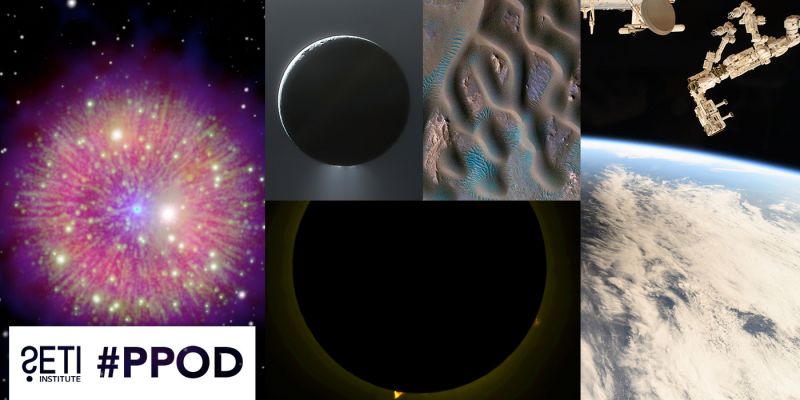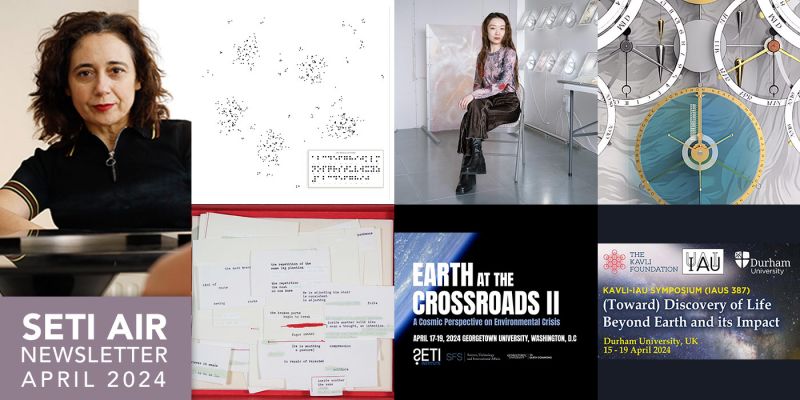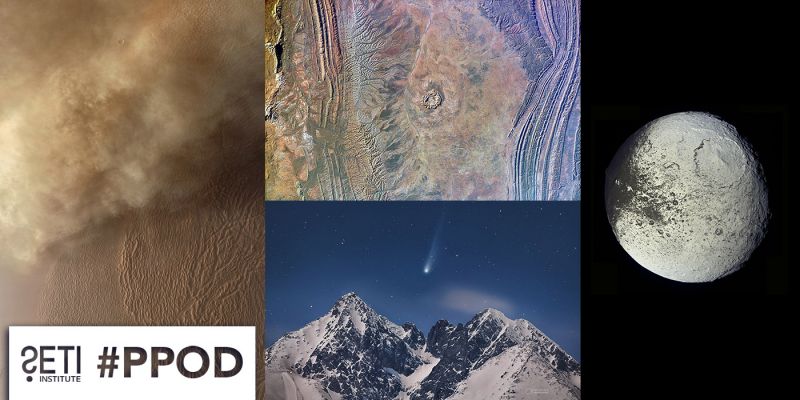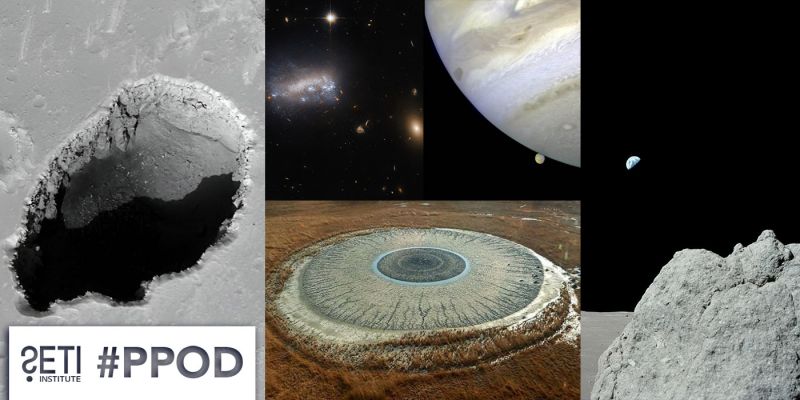
Gorgeously photographed scenes of the hauntingly stark high Andes of Chile grace the pages of the New York Times Magazine, the otherworldly beauty a captivating visual companion to the profile on Nathalie Cabrol, Director of the Carl Sagan Center at the SETI Institute and NASA Astrobiology Institute (NAI) team leader. Dr. Cabrol’s work as an astrobiologist specializing in planetary science involves in-depth study of extreme environments here on Earth, environments that may provide insight into conditions – and the possibility of life – on Mars. So-called Martian analog sites, such as the Atacama Desert and Altiplano, allow researchers to test detection tools and discover the limits of habitability in a harsh landscape of high altitude, arid lakebeds, and intense UV radiation. Finding ways to detect the traces life leaves behind in such a punishing environment is critical to unlocking the secrets of life, both here and on Mars, and central to Cabrol’s passion and life’s work. This excellent piece offers the reader a chance to experience the awe of a landscape as surreal and alien as anything dreamed of in science fiction, as well as a moving window into Cabrol’s own compelling story.
- NY Times Magazine: Nathalie Cabrol Searches the Earth for the Secrets of Life on Mars
- SETI.org: Nathalie Cabrol - Overcoming the Odds and her Search for Life on Mars
- SETI.org: Aiming High! The Search for Biosignatures on Mars Starts High on Earth
Jill Tarter spoke at the Florida Institute of Technology's third Cross Cultural Management Summit at Caribe Royale in Orlando last week, talking about her own “cosmic perspective” on the future of SETI research. Dr. Tarter, the former director of the Center for SETI Research and holder of the Bernard M. Oliver Chair for SETI at the SETI Institute, spoke about the exciting discoveries and technological advancements that suggest an answer to the question, “are we alone?”, may be right around the corner. As reported in Florida Today:
“I think that in this century we are going to be finding life beyond Earth," Tarter told the audience.
"We can discover it: We can find biomarkers on planets or moons of our solar system. We can find artifacts in the solar system as we explore. We can look for remote biosignatures in the atmospheres of distant exoplanets," Tarter said.
"Or, perhaps we can detect the work product of technological civilizations: technosignatures," she said.
Jill Tarter’s talk, titled “A Cosmic Perspective: Searching for Aliens, Finding Ourselves”, also touched on specific projects, including Laser SETI, an initiative to place specialized cameras around the world to observe the sky on an unprecedented scale:
"We can build a series of 96 cameras, spread around 12 sites around the globe, working in the optical and infrared. We will literally be able to look up at all of the sky, all of the time to see if there are any bright flashes. To see if any other phenomenon, like fast radio bursts, have an optical component. I'm really excited about it," she said.
You can learn more about Dr. Tarter’s work and Laser SETI’s progress at SETI.org.
- Florida Today: Astronomer portrayed by Jodie Foster in 'Contact': Man will discover alien life by 2100
- Daily Mail: NASA scientist who was portrayed by Jodie Foster in the 1997 movie Contact claims mankind will discover Alien life by the year 2100
- SETI.org: Jill Tarter — Beating the Odds
- SETI.org: Laser SETI 2018
A paper recently published in The Astrophysical Journal has caught the attention of Seth Shostak, senior astronomer at the SETI Institute. The search for extraterrestrial intelligence has typically focused on the detection of signals, which has the drawback of relying on observers from Earth listening to the right place at the right time. A new approach circumvents this dilemma. A tactic Dr. Shostak called “a detection scheme that doesn't depend on synchronicity” in an article for NBC News, Spanish astronomer Hector Socas-Navarro proposes we look for artificially-created satellites – signs of advanced civilization - around faraway planets. Dr. Shostak explains:
The idea is to hunt for evidence that’s always around — artifacts that might even outlast the extraterrestrials themselves, in the same way that fossilized bones reveal the long-gone dinosaurs. We’ve never seen a T. rex, nor heard its roar. But we have no doubt that they once stomped across the landscape.
While the odds of detecting a cluster of alien satellites on a distant world may still be slim, Dr. Shostak argues that this approach offers several advantages:
"The beauty of this scheme is manifold. To begin with, there’s no synchronicity problem, so the aliens don’t need to make any effort to get in touch. Even if they managed to blow themselves to smithereens millions of years ago, their satellites might still be around to mark their collective grave."
"In addition, this approach requires no new telescopes nor even any new experiments. Astronomers would only need to do a careful check of data that’s already been collected in the search for exoplanets."
Want to hear more about E.T. detection and other science topics? When he’s not hunting aliens, Seth Shostak hosts the radio show and podcast, Big Picture Science, which broadcasts episodes combining the latest scientific innovations with witty storytelling.
- NBC News: Alien satellites might offer a new way to find E.T.
- Big Picture Science: Life in Space
The SETI Institute’s Matija Cuk and colleagues have uncovered further evidence in support of the theory that Saturn’s rings and moons may have come into being in relatively recent times - as recently as the when our planet was home to the first dinosaurs. The Economist looked at some of the work Dr. Cuk and his colleagues have done so far, and why this is particularly exciting for the field of SETI:
"By and large the big things in the solar system—planets and moons—are thought of as having been around since the beginning. The suggestion that rings and moons are new is, though, made even more interesting by the fact that one of those moons, Enceladus, is widely considered the most promising site in the solar system on which to look for alien life. If Enceladus is both young and bears life, that life must have come into being quickly. This is also believed to have been the case on Earth. Were it true on Enceladus, that would encourage the idea that life evolves easily when conditions are right."
Tantalizingly, instruments from NASA’s Cassini spacecraft detected molecular hydrogen - a gas used by microorganisms in ecosystems deep in Earth’s oceans - discharging from the frozen surface of Enceladus when it flew by in 2015. While this falls short of proving that life presently exists on Saturn’s moon, it supports the possibility that life could survive there. You can read more about Enceladus and Matija Cuk’s work with the SETI Institute at SETI.org.
- The Economist: Planetary cataclysms - Saturn’s rings and several of its moons may be recent creations
- SETI.org: Moons of Saturn May Be Younger Than the Dinosaurs
- SETI.org: Another smoking gun in the search for life in Enceladus' ocean
Last week, The X Flies revealed some of the wonders of insects, the good and the bad. This week, the encore of Skeptic Check: Your Inner Lab Coat considers logic and deductive reasoning.
Last week Bill Diamond sat down with SETI Institute Fellow Mark Showalter to discuss New Horizons’ next flyby target, officially known as MU69, now nicknamed Ultima Thule.
- European Week of Astronomy and Space Science, April 3-5, Liverpool, UK Franck Marchis will participate
- Contact Conference: April 6-8, Sunnyvale, CA Seth Shostak and Nathalie Cabrol will be speaking
- California Academy of Sciences: April 12, 2018 San Francisco, CA Seth Shostak to participate in the monthly Nightlife talk
- AAS Dynamical Astronomy Public Lecture: April 16, 2018, San Jose, CA featuring Cristobal Petrovich
- Silicon Valley Astronomy Lecture Series: April 18, Los Altos Hills, CA SETI Institute scientists Michael Busch will speak
- SETI Talks: April 19, 2018, Menlo Park, CA John Rummel and Robert Zubrin on Planetary Protection
- California Academy of Sciences: April 21, 2018, San Francisco, CA Franck Marchis will demonstrate the Unistellar eVscope
- Montalvo Arts Center: April 27, 2018, Saratoga, CA Life Beyond Earth featuring SETI Artist in Residence Felipe Pérez Santiago, Director of SETI AIR Charles Lindsay and SETI Institute co-founder Jill Tarter
- Palo Alto Jewish Community Center, May 2, Palo Alto, CA Seth Shostak to of offer SETI Talk presentation
- Association of Computer Professionals in Education: May 4, Welches OR Seth Shostak to participate in annual conference
- The Villages: May 8, San Jose, CA Seth Shostak to offer talk about SETI
- Silicon Valley Astronomy Lecture Series: May 15, Los Altos Hills, CA Chasing New Horizons: Inside the Epic First Mission to Pluto with Alan Stern and SETI Institute Scientific Advisory Board member David Grinspoon





